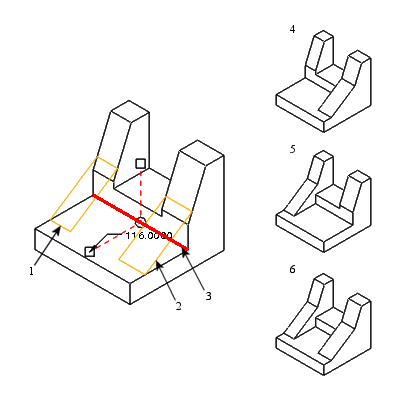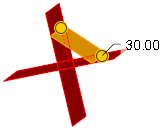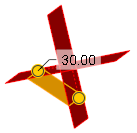About Chamfer Placement Ambiguity
As you work with chamfers, you may encounter a situation when more than one possible placement location exists for the current chamfer set. This can happen when two surfaces intersect in multiple, distinct locations. If this situation occurs, placement ambiguity results in which the placement of the chamfer pieces is unclear due to the selected references and part geometry.
You can easily address placement ambiguity. The table below illustrates the two types of placement ambiguity and the methods used to address them.
Placement Ambiguity
|
Ambiguity Type
|
Example
|
|---|---|
|
Chamfer Set Ambiguity
The chamfer set contains chamfer pieces that co-exist and can be placed in various locations given the selected references and part geometry. If this occurs, the chamfer set contains ambiguity.
Method: Use the Pieces tab. From the Pieces table, select the chamfer piece to exclude and select Excluded. All other pieces are Included by default.
|
 1. Chamfer piece 1 2. Chamfer piece 2 3. Edge reference 4. Chamfer piece 1 excluded 5. Chamfer piece 2 excluded 6. Both chamfer pieces included |
|
Mutually Exclusive Pieces
The chamfer set contains ambiguity, however, the chamfer pieces cannot co-exist. This results in mutually exclusive pieces.
Mutually exclusive pieces can be placed in different locations between the same referenced surfaces. These pieces are mutually exclusive in which only one can be selected for the chamfer. This can occur if surfaces from two different quilts are used as references. Method: Use the  Next Solution button on the Edge Chamfer tab. Click the button to view each group and select the preferred group for the chamfer. Next Solution button on the Edge Chamfer tab. Click the button to view each group and select the preferred group for the chamfer. |
  |